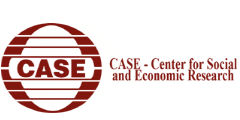One or two years ago, a Lavazza’s take-away coffee shop opened on the side of Georgia’s east-west highway in the area of Zestaponi. You always could find plenty of coffee shops in Tbilisi, but it was a novelty to have them next to the highway. Soon afterwards, another coffee bar opened along the road, and surprisingly, it was again set up close to Zestaponi. And today, there are even more take-away coffee points along that road, and they all cluster at Zestaponi.
Travelling from Tbilisi to Kutaisi or Batumi, you will notice other such clusters. You can buy hammocks and similar handicraft stuff in various places close to Khashuri, but nowhere else. Hot and sweet bread (“Tonis Puri” and “Nazuqi”) is offered around Surami. Baskets and wooden vessels are on sale around Shrosha, and clay products in Shrosha.
Intuition suggests that the selling points for a product should be distributed evenly along the whole road. In that way, the next place to drink coffee would never be too far away. If one leaves Tbilisi and feels tired, one would not have to drive to Zestaponi for drinking a coffee.
This peculiar economic clustering is not only observable along the Georgian east-west axis. One frequently finds neighboring grocery shops and pharmacies, competing supermarket chains having their branches in the same street, and petrol stations of different companies operating next to each other.
What is the economic reason for this clustering? Are vendors acting irrationally?
HOTELLING’S LINEAR CITY
The famous American economist Harold Hotelling (1895-1973) was the first to model the location decisions of sellers in his 1929 article “Stability in Competition” (Economic Journal 39 (153): 41–57). In a parsimonious but powerful model, he derived a surprising result explaining the coffee cluster around Zestaponi.
To simplify matters, Hotelling assumed that the vendors sell a homogeneous good, and they only differ with regard to their locations. As a further simplification, he assumed that the location will be chosen along a line (instead of a plane, as in reality). The citizens of his “linear city” are somehow distributed along the line, and they always buy at the nearest shop. Where would vendors, he asks, establish their stores?
As it turns out, in any equilibrium one will find clusters of vendors. Consider the simplest case of two sellers. If seller A is located to the left of seller B, then seller A will attract all the customers who are living to the left of A, while seller B will get everybody living to the right of B. How about the customers living between A and B? Well, those who are closer to A will buy from A, those closer to B from vendor B. Hence, the equidistance point between A and B divides the customers who buy at A from those who buy at B; all customers to the left of this point will buy from A, and those to the right of that point will buy from B. Can this situation constitute an equilibrium?
Assume that seller A would decide to move rightwards, closer to seller B. Then the equidistance point between A and B would also move to the right. So, there will be more people to the left of that point, and A will have more customers than before. In the same way, vendor B has an incentive to move leftwards.
So, whenever there is a positive distance between the two vendors, both of them have incentives to change their locations. By this argument, in any equilibrium with two sellers, there can be no distance between them, and they must be located at the same point on the line.
POLITICAL LOCATION
Hotelling’s model has another application. Ever since the French Revolution, it is common to categorize political standpoints on a left-to-right scale. This reflects the seating plan in the national assembly of 1789, where the supporters of the Ancien Régime sat right, while the revolutionaries sat left.
In his 1948 paper "On the Rationale of Group Decision-making" (Journal of Political Economy 56: 23–34) the Scottish Economist Duncan Black (1908-1991) proposed a model that represents the political spectrum as a line. Like in the linear city, citizens are distributed along this line according to their political views, and each of them votes for the candidate whose political position is closest to their own. But who are the vendors?
One might think that in a democracy, politicians try to foster their fundamental principles and convictions in the political process. In this view, a socialist holds her views because she cares about the well-being of the poorer classes, while a conservative is concerned about the traditional values of the society. Yet perhaps there are more prosaic reasons why politicians adopt certain positions. What if they are in fact indifferent about the political views they represent as long as these gain them political power? In Black’s model, political candidates do not care about left or right – they just want to get elected with any political agenda allowing them to accumulate votes.
According to Black, political candidates are like the vendors on the Tbilisi-Batumi highway. They want to sell something to the people – not coffee, but political messages. As payment they accept the votes of the citizens they address. While an ordinary vendor wants to maximize the number of customers by choosing a geographical location, a political entrepreneur aims to maximize the number of votes he or she receives by selecting a political position.
Like in the linear city, also this model predicts that the equilibrium will be characterized by clusters. If there is a two-party system as in the United States (Democrats vs. Republicans), in the United Kingdom (Tories vs. Labour), and perhaps in Georgia (UNM vs. Georgian Dream), both parties will try to get programmatically as close as possible to one another. Empirically, this is something that was observed in many countries.
For example, the German conservatives (CDU) under Angela Merkel took over almost the entire agenda of the political left: they expanded the social welfare state, terminated nuclear energy, and introduced gay marriage, to name just a few things one would not expect to be on a conservative agenda. This strategy turned out to be extremely successful for the conservatives. Everybody with views to the right of the CDU had to vote for them anyway, due to a lack of alternatives, while just little space remained to the left of the CDU. Those very left votes not acquired by the CDU were shared between the Social Democrats, the Socialists, and the Green Party. So, through a good understanding of Black’s model, and by abandoning all their political convictions, the 2013 national elections brought about the best result for the conservatives since more than 20 years.
In Georgia, we see fierce opposition between the UNM and the Georgian Dream. As time progresses, however, we can expect that the political positions of the two parties will converge. Given the wild slanders and personal attacks that characterize Georgian politics, that might be a desirable development.
















Comments
Except that the Hotelling model predicts that there is simply no equilibrium. Worse, if we change the assumptions it might very well be that vendors locate at different ends of the road. That might happen for example if the cost of transportation is disproportionate to distance (i.e. quadratic, not linear as in Hotelling), or if we have more than two firms. In other words, an explanation for the clustering of coffee vendors the Hotelling model is as likely to provide as other models/theories.
As long as the customers buy at the vendor who is closest, the result does not change. When the "transportation cost" are quadratic, customers still go to the closest vendor.
Yes, they still go to the closest vendor. But that doesn't mean that the two vendors are at the same location. Bit puzzled that Hotelling is used to explain why vendors cluster, when Hotelling in fact Hotelling's prediction only holds under very specific assumptions (say no price competition if prices are regulated).
Indeed, in this article we abstract away the price as a decision variable. In that way, we arrive at Black's Median Voter model, and we could explain the behavior just with the latter. But I think it would be wrong to omit Hotelling in this context.
I just looked it up: Black (1948) does not even cite Hotelling. Given that Black's model apparently is a special case of Hotelling's model (namely when prices of all players are exogenously fixed at the same level), this seems quite unfair towards Hotelling. We do not want to do the same mistake in this article again.
A similar story reported on Planet Money (courtesy of Anthony Shierman) issue:http://www.npr.org/blogs/money/2012/11/06/164435445/episode-128-friend-or-foe
Obviously the Hotelling model is very simple, however the line can be generalized to two dimensional metric space and to some other more general spaces. Moreover if the transportation cost is increasing(including quadratic) function of the distance (which is a very natural assumption) even in more general metric spaces than line, firms have incentive to move on the line joining two firms toward each other. This is for case of two firms.
Except the case of three firms, in all cases for Hotelling line in equilibrium we have clusters (more than one cluster).
The reason why two firms cluster is always the same, and is as it was in the simplest case of Hotelling model.
In reality many but not all location decisions can be explained by Hoteling model, however some of them will contradict it. Shortly, for the phenomena of clusters of two shops the Hotelling suits very well.
Great topic! But I am not convinced :-)
In the Hotelling's model, businesses choose location. That may be applicable to the case of pharmacies on the same square. But what we observe along the E-W highway is that residents in particular locations somehow pick the same activity, it is not that they move there to pursue it.
In contrast to Shrosha and Khashuri the case of Lavazza kiosks can be analyzed by Hotelling model. Since the travels will pass by the kiosk anyway, there is no cost of transportation. The role of transportation cost can play the time from deciding that you want to drink coffee until you get it, And if you assume some distribution of the points, where people decide to drink coffee than you are in Hotelling type model. (not necessarily linear model).
In case of clay or wood products it is difficult to think about something which can play the role of transportation cost or distance and respectively Hotelling model seems to be not so appropriate.
I think the model applies to all these cases. If people do not choose their location, but the product they want to sell, the model still applies. When somebody wants to open a business in Shrosha, he might consider to open a coffee bar, serve hot bread, produce hammocks, or carve wooden vessels. Yet Shrosha happens to be the optimal location for selling wooden vessels, while it is a disadvantageous location for selling other stuff. Therefore, the guy chooses to sell wooden vessels, driven by the forces captured in the model.
I wonder if today's post on "If you are clueless about what to do, do what everybody else does" is a better explanation!
Indeed!
http://www.stern.nyu.edu/networks/phdcourse/DAspremont_Gabszewicz_Thisse_On_Hotellings_Stability_in_Competition.pdf
M, that is quite interesting. Thank you for the link. I was not aware of the controversy revolving around the Hotelling model. However, in the article we refer to a simplified version where the price is no decision variable. The only decision variable is the location on the line. In that case, the Hotelling model becomes the same as Black's Median Voter model (that we also cite in the article), and there it is straightforward that in an equilibrium, if there is any, we must have clusters.
I just saw someone operating a Lavazza stand out of the hatchback of a Smart car in Vera. Let's see where it goes!